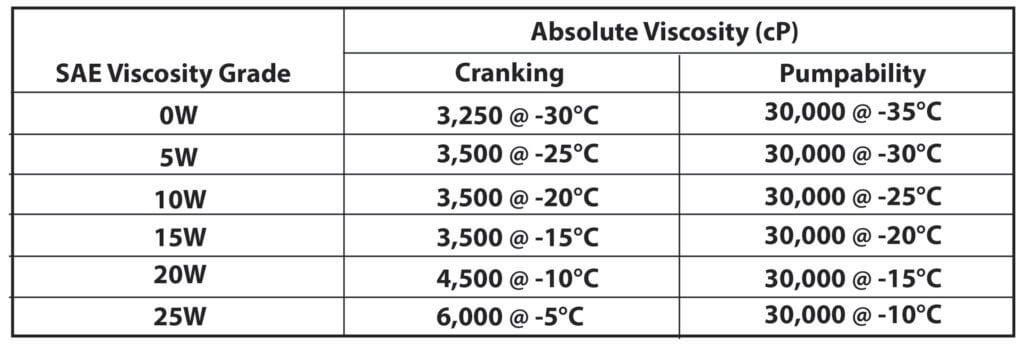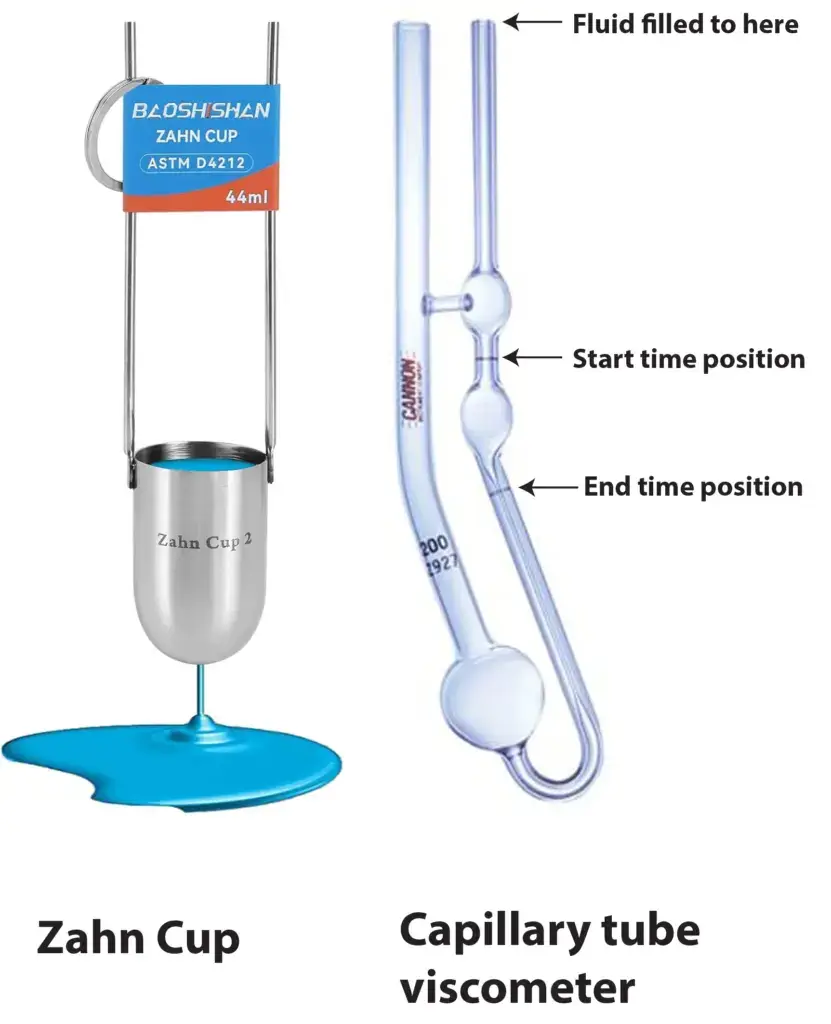Absolute oil viscosity versus KInematic oil viscosity
Absolute oil viscosity versus Kinematic viscosity
Oil viscosity refers to the thickness or resistance to flow of the engine oil. It’s a crucial property that determines how easily the oil moves through the engine’s components, providing lubrication to reduce friction, protect against wear, and help cool the engine. But there’s more to it than that; there’s absolute or “dynamic” viscosity, and there’s kinematic viscosity
Absolute viscosity is different than Kinematic viscosity
Kinematic viscosity is measured by draining or pouring — it’s about gravity flow
Kinematic viscosity measures how a motor oil flows under
gravity. You may be familiar with the method used to measure a paint’s viscosity. That method uses a Zahn cup. The cup is dipped into a container of oil and lifted and timed until the flow stops.
However, for testing motor oil kinematic viscosity, the testing lab uses a capillary tube viscometer. The oil sample is placed into a glass capillary U-tube and the sample is drawn through the tube using suction until it reaches the start position indicated on the tube’s side. Then the suction is then released and the sample flows back through the tube under gravity. The narrow capillary section of the tube controls the oil’s flow rate; more viscous grades of oil take longer to flow than thinner grades of oil. This procedure is described in ASTM D445 and ISO 3104.
Absolute/dynamic viscosity is about the oil’s internal friction
To measure absolute viscosity, the fluid is stirred, and the amount of force required to stir the fluid is measured. As you might guess, it takes more force to stir a 75W gear oil than a standard automatic transmission fluid. That increase in force is due to the gear oil’s high internal friction compared to the transmission fluid’s much lower internal friction.
Absolute/dynamic friction measurements are used to determine a motor oil’s cold cranking ability and pump ability, or “W” rating.

©, 2020 Rick Muscoplat

